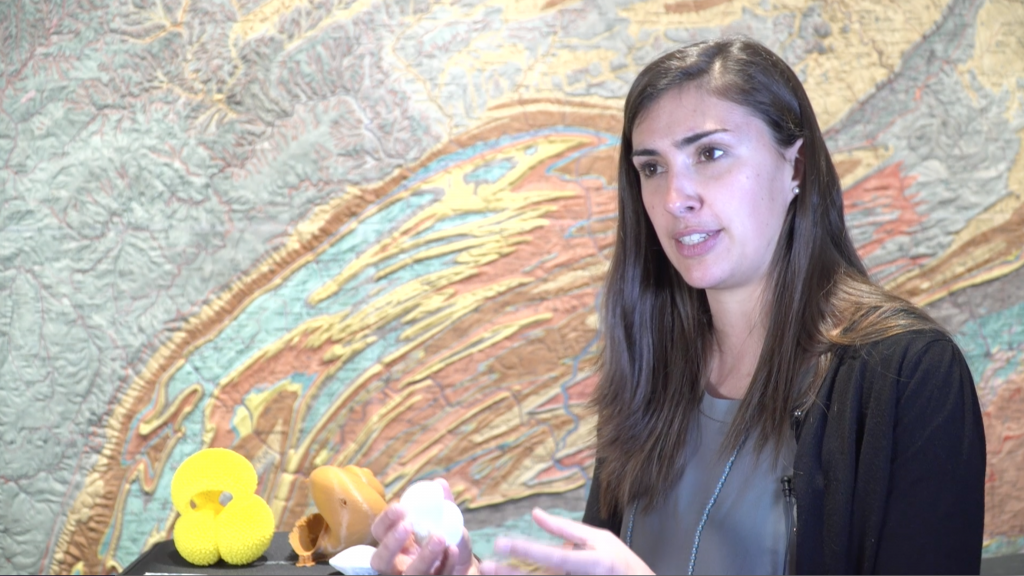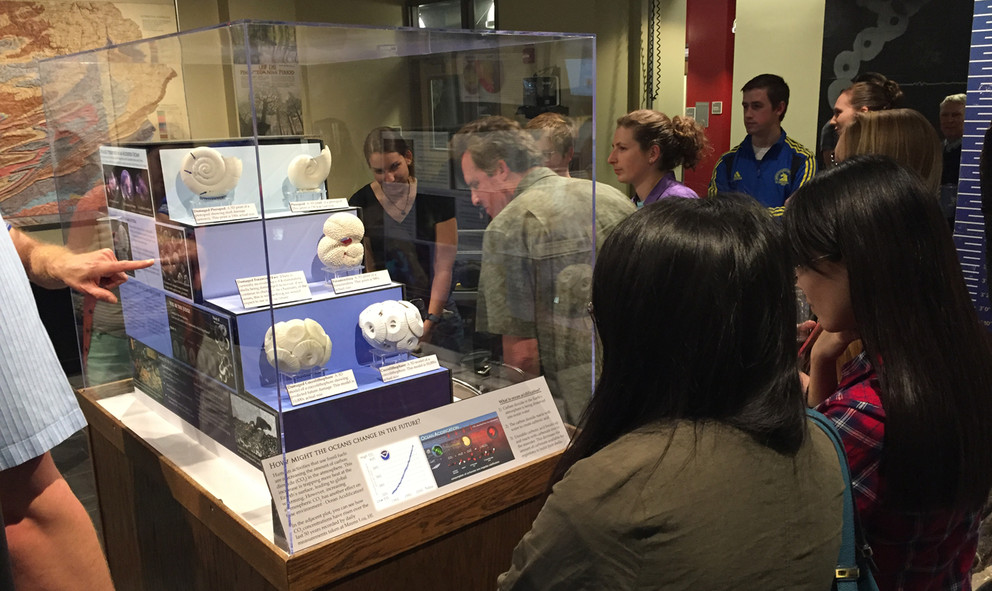
Geosciences PhD candidate Rosie Oakes shows 3D printed objects created from computerized tomography (CT) scans.
Advances in 3D printing technology are expanding access to the technology to a wide range of disciplines. Long used in the engineering field, 3D printing is increasingly used in the medical community for customized prosthetics and bioprinting. Beyond medical application, 3D printing is also becoming more prevalent in artistic endeavors, like in MIT’s glass 3D printer.
Penn State is no exception to the increasing application of 3D printing. Graduate geosciences PhD candidate Rosie Oakes has been using 3D printing in her graduate research. Oakes’ goal is to help people better understand microscopic organisms affected by ocean acidification.
Oakes describes ocean acidification as “the effect carbon dioxide from the atmosphere has on the chemistry of the ocean.” Carbon dioxide from pollution dissolves into water, reacts with it, and creates carbonic acid.
Oakes’ research focuses on pteropods. Pteropods are tiny swimming snails that build their shells from calcium carbonate. Higher concentrations of carbonic acid contribute to changing ocean chemistry, making it difficult for pteropods to build their shells.
Oakes and her fellow geosciences graduate students recently designed an ocean acidification exhibit. The exhibit is located in the Earth and Mineral Sciences Museum and Art Gallery in 16 Deike Building. The interactive exhibit promotes understanding the effect of ocean acidification on microscopic organisms. It features three different microscopic organisms affected by ocean acidification, pteropods, coccolithophores, and foraminifera
Several of the 3D models were printed at the Penn State Maker Commons.
3D printing is valuable in Oakes’ research as it allows for an in-depth understanding of microscopic organisms. “The ability to increase the size of these pteropods and allow people to see what they are makes it easier for people to interact with a field of research that they previously wouldn’t have been able to interact with,” said Oakes.
To create 3D models, computerized tomography scans (CT scans) of the organisms are collected. CT scans are a series of x-ray images from different angles used to construct a 3D model. The 3D model files were then submitted to the Maker Commons at makercommons.psu.edu.
The benefit 3D printing has on a microscopic field of research is easily seen according to Oakes. “Actually having it [a 3D model] in your hands is a really useful way to learn.”
—
Maker Commons is a university-wide initiative to enrich the teaching and learning experience through 3D printing, rapid prototyping, design thinking, and direct support for students, faculty, and staff. Learn more about the Maker Commons at makercommons.psu.edu.

